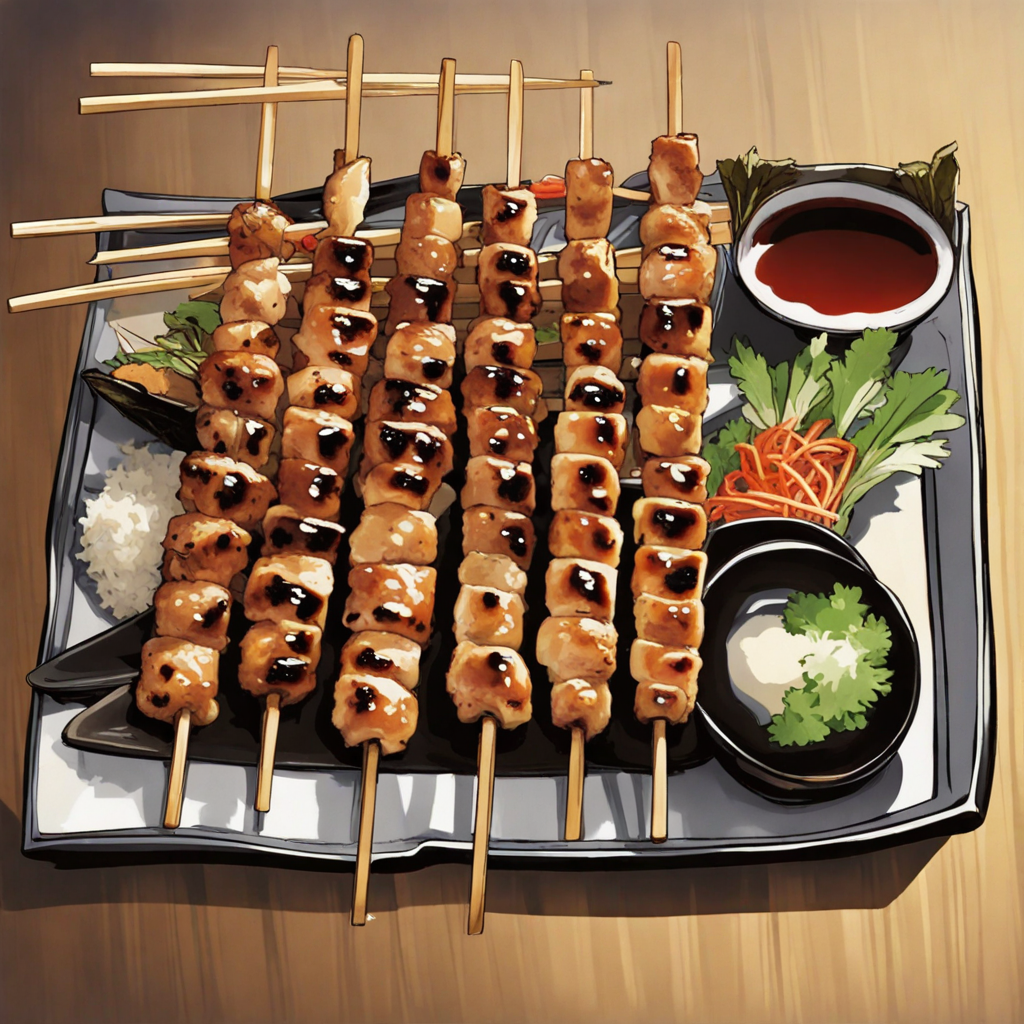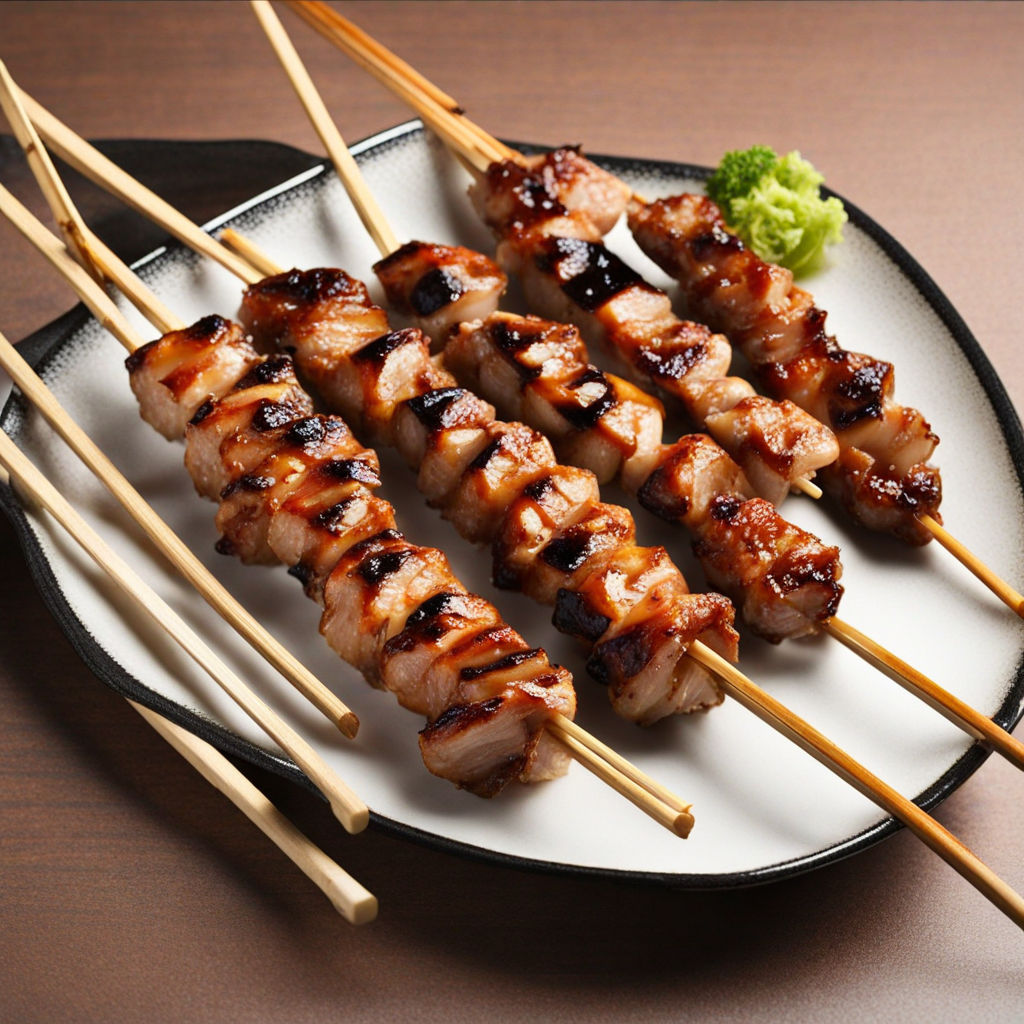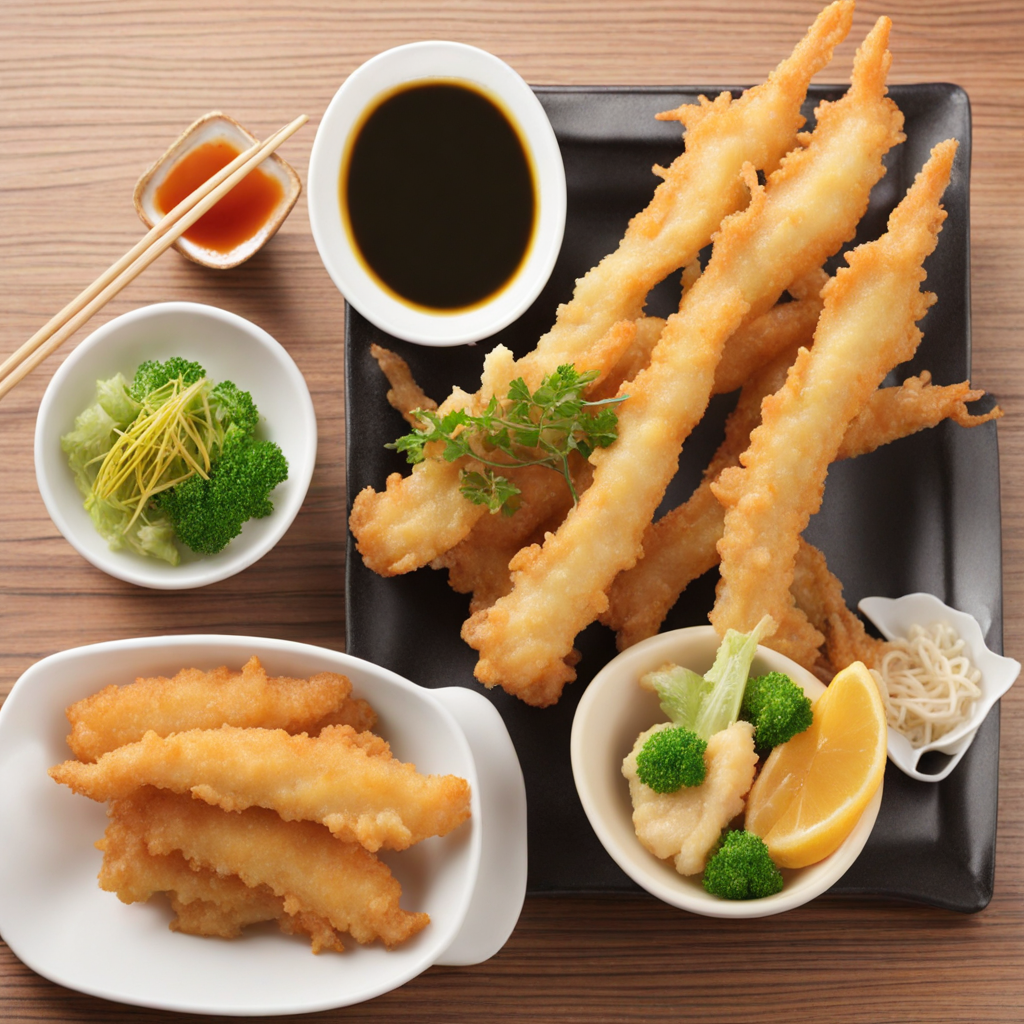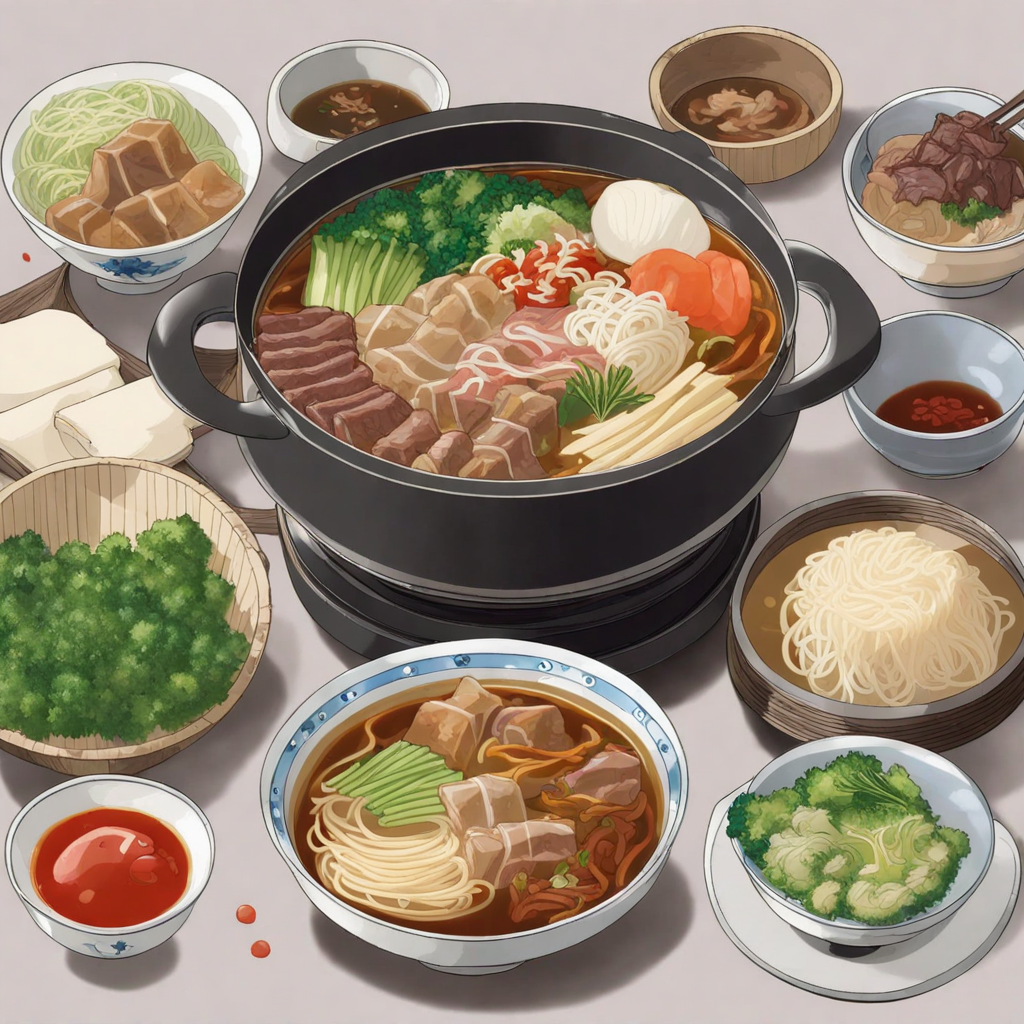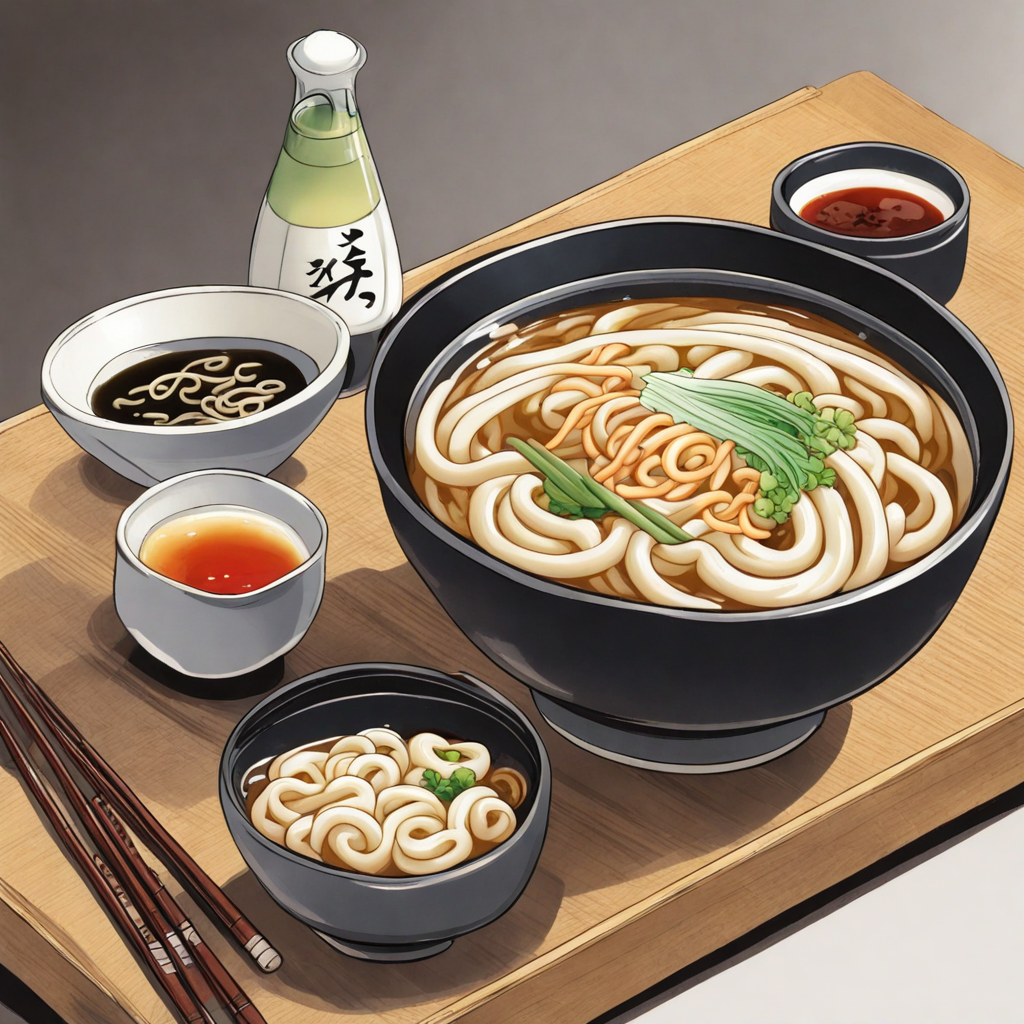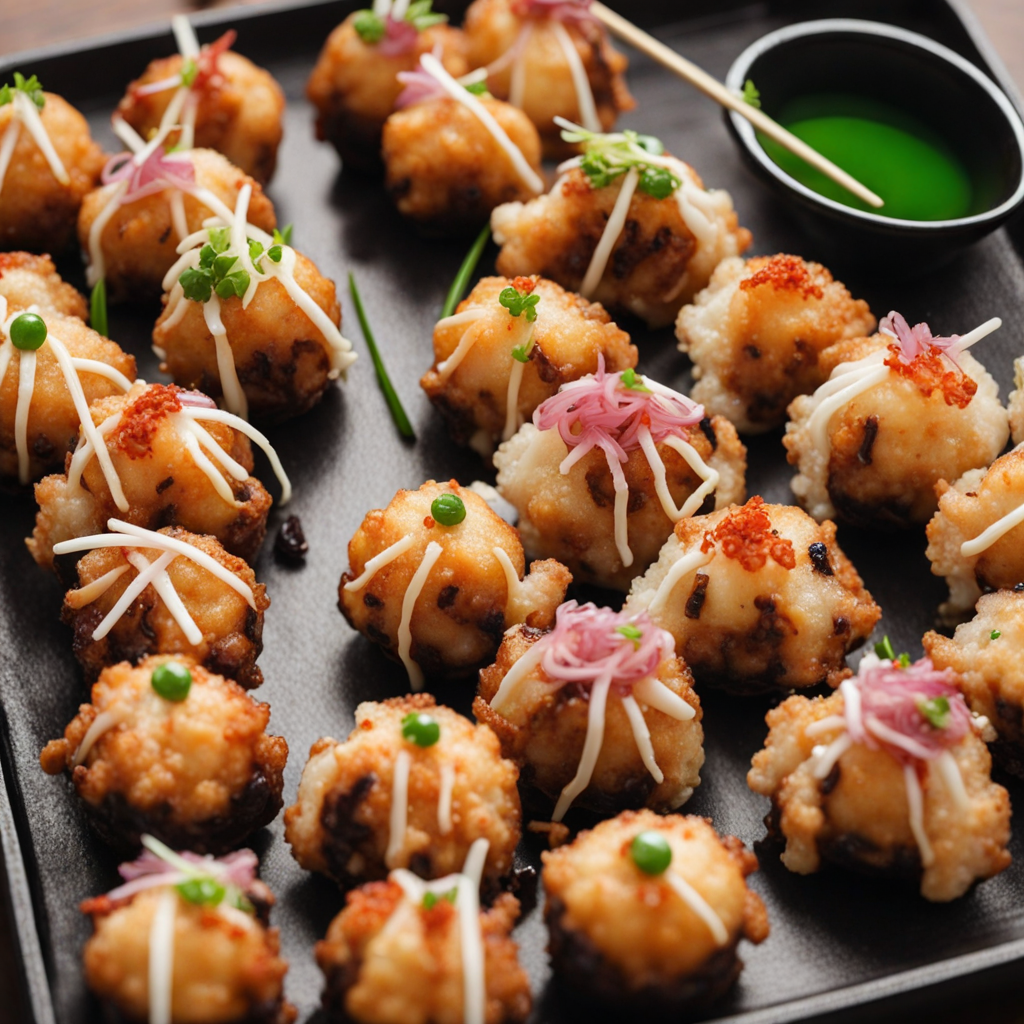Yakitori
Yakitori is a delightful Japanese dish that features skewered and grilled chicken, showcasing the country's rich culinary traditions. The term 'yakitori' translates to 'grilled chicken,' and it encompasses a variety of chicken parts, including breast, thigh, skin, liver, and even cartilage. Each part brings its own unique texture and flavor, making every bite a new experience. The skewers are typically seasoned with either salt (shio) or a savory-sweet sauce known as tare, which is made from soy sauce, mirin, and sugar. The grilling process imparts a smoky aroma that enhances the chicken's natural flavors, creating a dish that is both simple and exquisite. The preparation of yakitori is an art form in itself. Street vendors and specialized izakayas (Japanese pubs) often serve these skewers, giving diners a chance to enjoy them fresh off the grill. As the chicken cooks, it develops a beautifully charred exterior while remaining juicy and tender on the inside. Accompanying the yakitori are often dipping sauces or condiments, such as sesame seeds, chopped green onions, or a tangy ponzu sauce, which elevate the overall tasting experience. The dish is also traditionally enjoyed with a cold beer or sake, making it a popular choice for social gatherings and casual dining. Beyond the classic chicken variations, yakitori can also include seasonal vegetables like shishito peppers, mushrooms, and leeks, which add a burst of freshness and color to the skewers. This versatility allows yakitori to appeal to various palates, whether you're a meat lover or a vegetarian. The communal nature of sharing yakitori skewers makes it not just a meal, but a delightful social experience, inviting diners to taste and share while discovering the complex flavors of Japan's culinary landscape.
How It Became This Dish
Origins of Yakitori The history of 焼き鳥 (yakitori), a beloved Japanese dish of skewered and grilled chicken, can be traced back to the Edo period (1603-1868). During this time, the common people of Japan began to seek affordable and convenient street food options, and yakitori emerged as a popular choice. The word "yakitori" literally translates to "grilled bird," but it initially referred to various types of grilled poultry, with chicken becoming the predominant choice over time. Initially, grilled chicken was often prepared at home or served at festivals. It was not until the late Edo period that specialized yakitori shops began to appear in urban areas, particularly in bustling cities like Tokyo (then known as Edo). These establishments catered to the growing working-class population, offering quick meals that could be enjoyed on the go. The vendors would set up their stalls near train stations and busy streets, making yakitori a staple of street food culture. \n\n Cultural Significance Yakitori holds a special place in Japanese culture, transcending mere sustenance. It is often associated with community and social gatherings. The act of sharing skewers of grilled chicken among friends and family fosters a sense of togetherness. In izakayas (Japanese pubs), yakitori is frequently served alongside drinks, enhancing the experience of socializing and celebrating. The dish also features prominently during festivals and seasonal events, where it symbolizes joy and festivity. Furthermore, yakitori reflects the Japanese culinary philosophy of utilizing the whole animal. Different cuts of chicken are used, each offering a unique flavor and texture, from tender breast meat to rich and juicy thigh. Offal, such as liver and heart, is also commonly skewered, showcasing a culinary tradition that emphasizes resourcefulness and respect for the ingredients. This practice is deeply rooted in the Japanese principle of "mottainai," which conveys a sense of regret over waste and encourages the use of every part of an ingredient. \n\n Development Over Time As Japan entered the Meiji era (1868-1912), culinary influences began to expand, and yakitori evolved alongside the nation’s modernization. The introduction of Western cooking techniques and ingredients led to the development of new styles and flavors. Grilling methods became more refined, and the use of charcoal, particularly binchotan (white charcoal), gained popularity for its ability to produce high heat while imparting a subtle flavor to the meat. By the mid-20th century, yakitori had solidified its status as a staple in Japanese cuisine. Post-World War II, as the economy began to recover, yakitori shops proliferated across the country. These establishments became gathering places for salarymen returning from work, providing a comforting and affordable meal. The rise of yakitori chains further popularized the dish, making it accessible to a broader audience. \n\n Regional Variations Japan's diverse geography has inspired numerous regional variations of yakitori, each with its own unique characteristics. For example, in Kyoto, the use of fresh, local ingredients and a focus on seasoning with salt rather than tare (a sweet soy sauce glaze) distinguishes their style. Conversely, in Osaka, yakitori is often served with a more robust tare sauce, reflecting the region's culinary preferences for bold flavors. In the Okinawa region, the dish takes on a different form, often incorporating local chicken breeds and unique marinades that highlight the island's tropical ingredients. This diversity demonstrates how yakitori has adapted to local tastes and practices, evolving into a dish that resonates with various cultural identities across Japan. \n\n Modern-Day Yakitori Today, yakitori is celebrated not only in Japan but also around the world. Japanese restaurants, izakayas, and street food stalls serve this dish in various forms, often accompanied by a wide array of dipping sauces and side dishes. The global fascination with Japanese cuisine has led to creative interpretations of yakitori, including vegetarian versions and fusion dishes that incorporate international flavors. In Japan, yakitori festivals are held regularly, showcasing the skill of yakitori chefs and the importance of this dish in contemporary culinary culture. The Tokyo Yakitori Festival, for instance, attracts thousands of visitors each year, celebrating the rich history and future of this iconic food. Additionally, many chefs are dedicated to preserving traditional grilling techniques while exploring new flavors, ensuring that yakitori remains a dynamic part of Japan's culinary landscape. \n\n Conclusion The enduring popularity of yakitori is a testament to its cultural significance and adaptability. Its evolution from humble street food to an internationally recognized dish reflects broader trends in Japanese society and cuisine. As it continues to inspire chefs and food lovers alike, yakitori not only satisfies hunger but also serves as a delicious connection to Japan's rich culinary heritage, reminding us of the importance of community, tradition, and the joy of sharing a meal.
You may like
Discover local flavors from Japan


